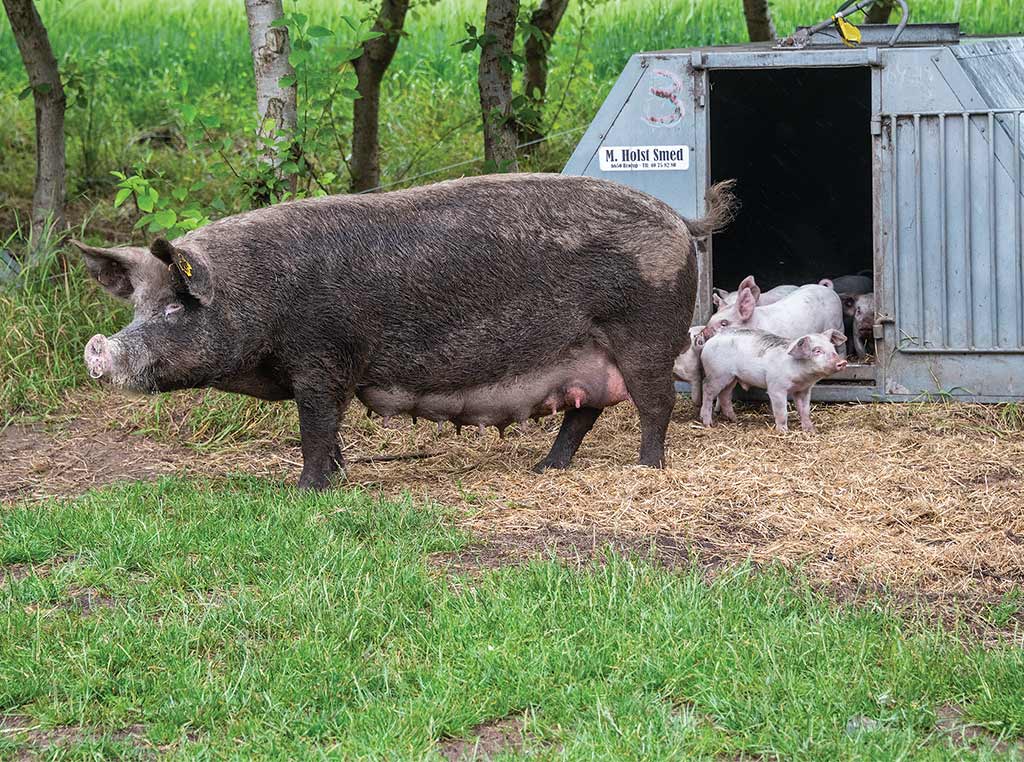Agriculture, Farm Operation January 01, 2023
Catering to Demand
.
IP soybeans provide a premium option.
Camil Tétreault isn't fond of eating tofu, but the Saint-Pie de Bagot, Quebec, farmer is a big fan of growing the identity preserved (IP) soybeans that are used to make the high protein food product. He's steadily increased the number of acres he devotes to IP production for the past eight years. He's found that as long as he pays attention to the fine details, they are a more profitable crop than corn.
The Canadian Seed Growers Association website defines IP production as maintaining the unique traits or quality characteristics of a crop variety from when the crop is seeded through to when the crop is harvested, transported, handled, processed and shipped. A trait can be any valuable, distinguishing characteristic that the buyer requires. This is verified through traceability protocols which allow them to be traced right from the certified seed source, through harvest, storage, processing and shipping to the end buyer.
"The key takeaway from that is traceability," says Kevin Kielich, the grain buyer with SG Ceresco in Saint-Urbain-Premier, Quebec. "They have to be kept clean and free of contamination from Roundup Ready or other IP soybean varieties. If the end buyer has questions about a lot, we can trace it from the beginning to the end of the production chain. It's a completely transparent process."
Soybeans fall into two broad classes, feed grade (crushers) and food grade (edibles). The vast majority of soybeans grown in Canada and the United States are crushers. As the name suggests, they're crushed for their oil, which is used to make food products or for biodiesel production. The meal byproduct is used for animal feed. Almost all crushers grown in North America are Roundup Ready or other GMO varieties. Edibles are grown for human consumption.
Non-GMO varieties. Nearly all IP soybeans are non-GMO varieties grown for the edible markets to make products like tofu, soy sauce, soy milk, vegetable protein products for affluent consumers in Japan and other affluent Asian countries, Kielich says. They are high-end products and command a significant price premium over ones grown for the dominant crusher market.
"There's a significant bonus for IP varieties that have a higher protein content that gives us an incentive to grow them," Tétreault says. "But they also come with a higher harvest risk, so growing them is always a gamble. But the challenge of growing them is one of the things that appeals to me."
You also need to use a different group of herbicides to control weeds in them, Kielich says. Some growers alternate them in their soybean rotation to help manage herbicide resistance.
Tétreault says it's important to have patience and not rush out to start planting just because one of the neighbors is going. Even emergence is critical for a good IP crop. The soil temperature must be above 10°C so he rarely puts them in the ground before mid-May. He constantly modifies his harvest equipment to minimize the amount of cracked grain.
"IP soybeans aren't for everyone," Tétreault says. "You have to spend more for the herbicides, you need to have extra clean fields. If you have a dirty field, the weeds can stain the grain and stained grain is downgraded. But if you have clean fields, good yields, and adjust your combines and grain handling equipment so they aren't cracking the seeds, there's an advantage to growing them."
"It's not rocket science," Kielich says. "The devil is in the details, but if you do it right, it pays off in dividends every time." ‡
Read More

AGRICULTURE, FARM OPERATION
Hog Cabins
Pork farm looks more like a vacation spot.

AGRICULTURE, SUSTAINABILITY
Dodging Potholes
Managing soil health helps offset weather and inputs.


